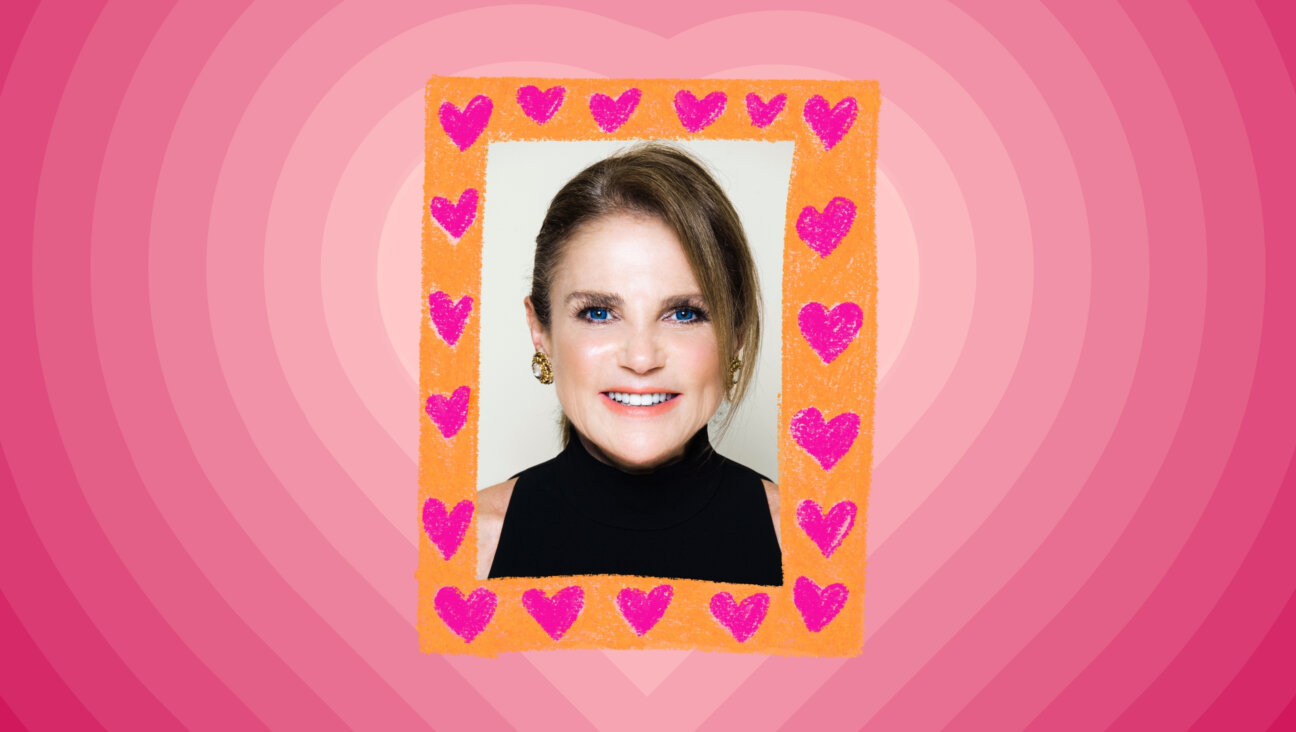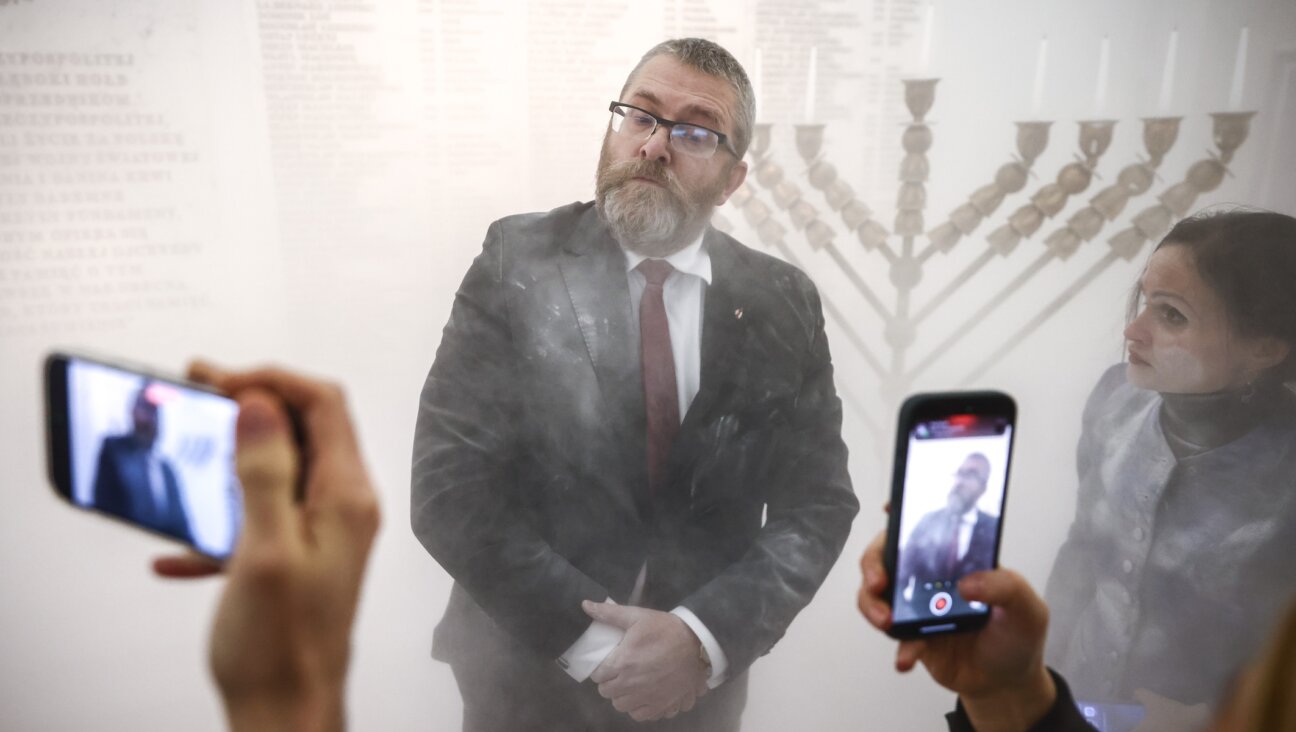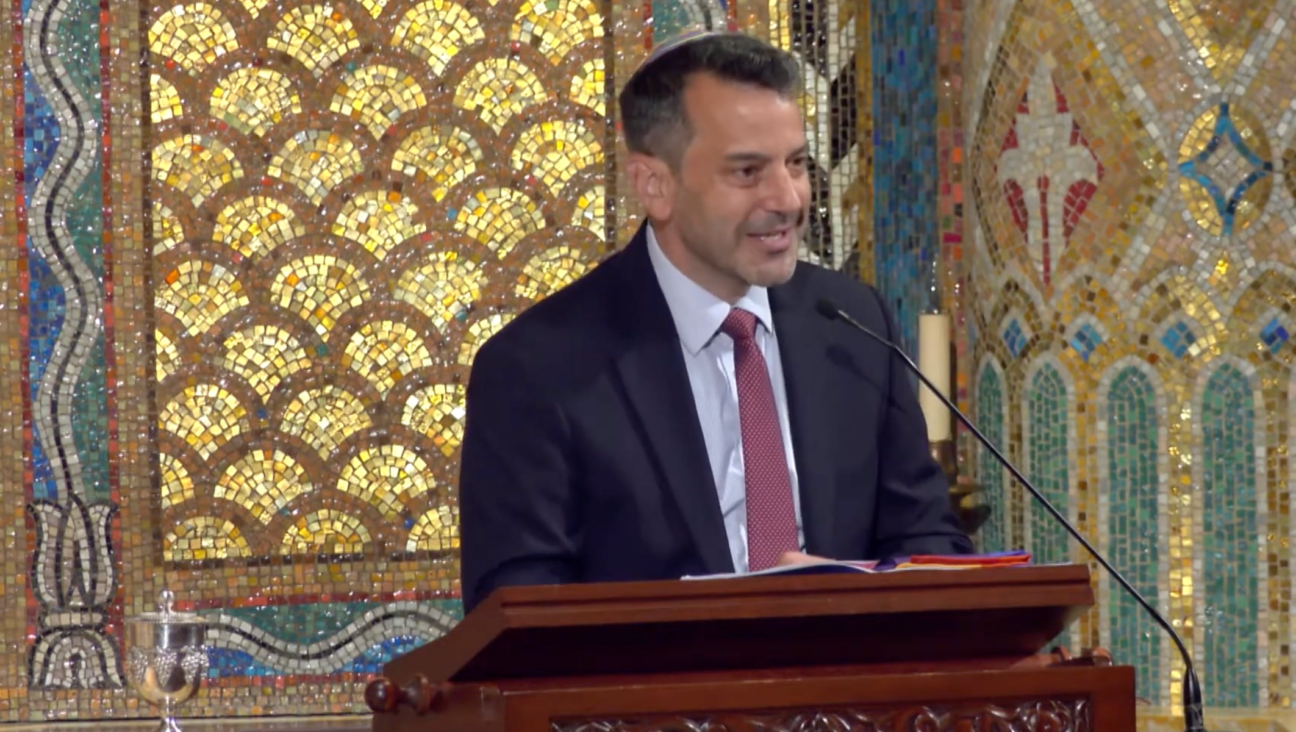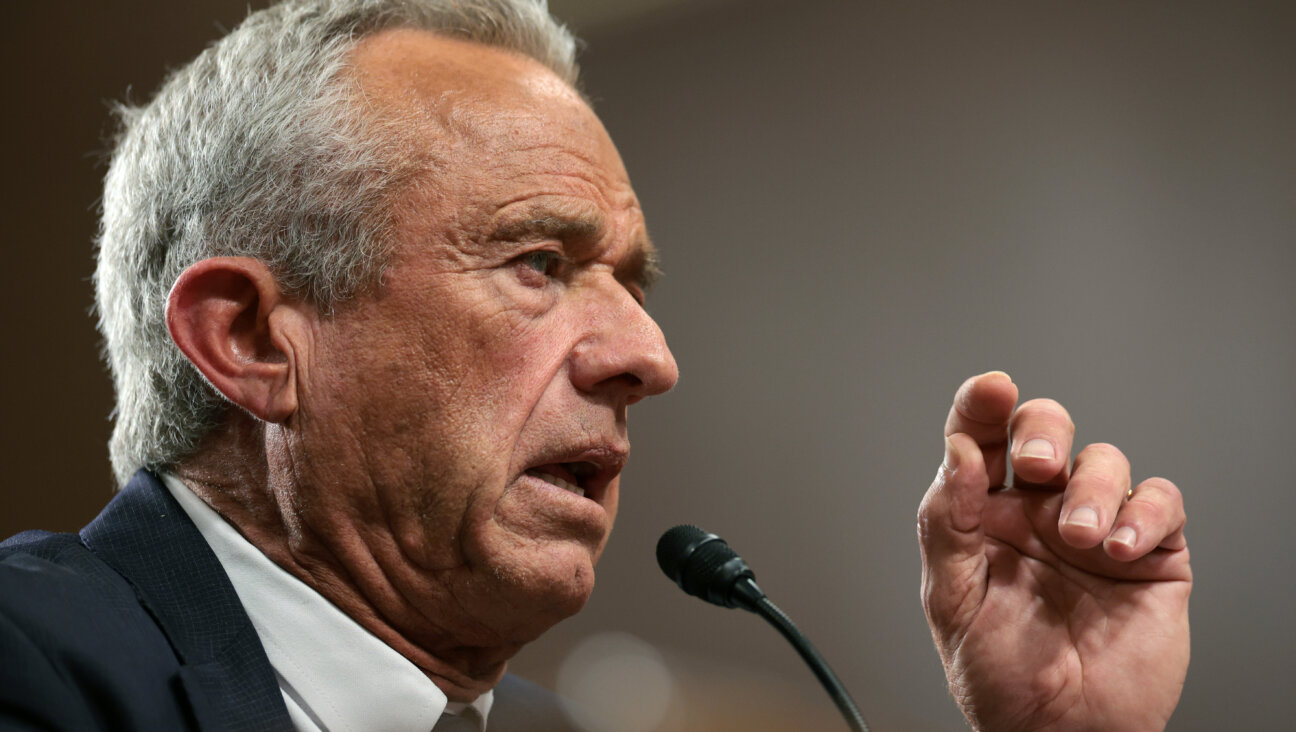A Window on the Western Wall
The Western Wall may be the holiest Jewish site, but it isn’t commonly associated with high art. It is more the province of sentimental pictures and tourist trinkets. “Solomon’s Wall,” a majestic painting that commanded $3,624,000 at Christie’s New York last month, was an exceptional example, an emotional rendering by a non-Jew who was Russia’s foremost Orientalist. Measuring nearly 7 feet by 5 feet, the oil is among only a handful of works from the “Palestinian” series completed by Vasili Vereshchagin (1842-1904) between 1884 and ’85, following his yearlong sojourn in the Holy Land.
The work is now one of the most valuable images of the Western Wall, in exclusive company with the 1877 “Solomon’s Wall” by French artist Jean-Léon Gérôme, which brought $2.3 million at Christie’s in 1999, and was being offered for $5 million by the New York gallery French & Company in the International Fine Art Fair at the Park Avenue Armory from May 11-16. Unlike his fellow Orientalist, who represented only a few figures, eliminating details that distracted from his romanticized compositions, Vereshchagin portrayed the temple remnant as it was: a sun-drenched wall crowded with weary pilgrims fervently seeking sustenance and spirituality.
The combination of elements made for a multidimensional artwork, a 19th-century European picture appealing to Russian and Judaic art collectors. Before the sale, it was prominently exhibited at the State Tretyakov Gallery in Moscow’s Vereshchagin Hall, and also at the Hilton hotel and at Christie’s showroom in Tel Aviv. Back in New York, the highlight of Christie’s Russian art auction hung at the very back of a gallery in the firm’s headquarters against a richly textured golden background, a display that was almost suggestive of the Western Wall itself.
Despite the painting’s inherently Jewish subject, Alexis de Tiesenhausen, the international head of Russian art at Christie’s, insists it is, foremost, “a powerful work by a great Russian artist.” The provenance is similarly non-Jewish: Consigned by the Berkeley Art Museum, it had been a 1920 gift from Phoebe Apperson Hearst. As for Vereshchagin, who eschewed the academy’s pleasantries in favor of harsh realism, he is a beloved if controversial master of the historical genre and perhaps Russia’s greatest battle painter. He was also a contemporary journalist of sorts, documenting his extensive journeys throughout Asia and the Middle East.
Throughout 1883, Vereshchagin captured the people and sites of the ancient land central to the world’s three main religions, then under Turkish rule, including the Tomb of Abraham, the Dead Sea and remains of the biblical town Bethsaida, near the Sea of Galilee. But it was episodes from the life of Jesus that ultimately sent this body of work into obscurity. The Russian Orthodox Church, incensed by the radically prosaic portrayal of the Holy Family, banned the whole series, and Vereshchagin accepted an invitation from the American Art Association to tour the United States with 110 of his latest works, including about 80 or so in the Palestinian series.
In 1891, following this phenomenally successful traveling show, the entire group was auctioned off for $84,300 (“Solomon’s Wall” fetched $2,500), with most of the works going to private American buyers. Only a few sketches — including “Two Jews,” a study for “Solomon’s Wall” — and a painting, “Tombs of the Kings,” ended up in Russia’s state collections.
From his vivid notes, it’s clear that Vereshchagin was deeply moved by the scene: “Jews of both sexes and all ages arrive from all parts of the world… literally to wash with their tears the sacred stones!” On Friday it was particularly busy, with “people from Palestine, Central Asia, India, Europe, and especially Russia praying in the most plaintive tones, beating their breasts, rocking their bodies to and fro, or leaning motionless against the stones and weeping, weeping, weeping!” Among those he observed was a woman imploring God to give her back her dead child, two Jews talking business, and a rabbi sitting on an empty wine crate and lamenting the destruction of the Temple.
As such, the painting is an important testament to Jewish life — even as a church steeple peeks out of its corner, a reminder of the city’s universality. But this artistic genre is distinctly the domain of non-Jews. It’s a coterie that also includes British artist David Roberts and Frenchman Alexandre Bida, both of whom created popular prints of the wall, as well as German (or Austrian) Gustav Bauernfeind, who created numerous depictions of the land before and after he settled in Jerusalem with his family in 1898. Jewish artists were just emerging in the 19th century, precariously gaining acceptance in Western academies, so it makes sense that they didn’t travel, for the most part, or focus on Judaic subjects. In the 20th century, religious imagery became more widespread, though portraits of rabbis and panoramic views of Israel are still far more common.
In the absence of Jewish pictorial accounts, how authentic are these depictions by non-Jews? According to London dealer David Stern, “They are important records of the Jewish presence in Jerusalem that capture the ambiance and topography well but almost always lose something of the Jewish character.” Although he doesn’t discount the rarity or significance of the Vereshchagin, Stern, who heads Stern Pissarro Gallery (the London affiliate of Tel Aviv’s Stern Gallery), feels that compared with figures encountered in works by such Jewish artists as Viennese Isidor Kaufman or Polish Moritz Gottlieb, “the spirit is not quite the same.”
Michael Landy, a New York-based consultant and dealer in 19th-century Judaic art, disagrees. As an example, he cited “Rabbi With Tefillin,” a stark 1892 oil by Polish artist Jan Styka. “There is no better painting of a Jew than that,” he said. In any case, both would be surprised if the buyer of the Vereshchagin was not Jewish. The auction house will only say that the winning telephone bidder was a private Russian, and de Tiesenhausen, for his part, maintains that the picture is “absolutely of interest to non-Jewish Russians.”
Given the strength of this market, whatever the identity of the buyer, it isn’t surprising that the painting sold well, despite the fact that its mammoth size was actually seen by some as impractical, and others felt that the $3-5 million estimate was steep. The previous record for Vereshchagin, set at Sotheby’s London in May 2005, was only £254,400 for “View of the Moscow Kremlin.” Perhaps this record-breaking price will bring more of Vereshchagin’s Palestinian pictures out of the woodwork, offering further fascinating glimpses of the Eternal City at the turn of the 19th century.
Jeannie Rosenfeld, a writer based in New York, has written extensively about Judaic art and artifacts.
A message from our Publisher & CEO Rachel Fishman Feddersen

I hope you appreciated this article. Before you go, I’d like to ask you to please support the Forward’s award-winning, nonprofit journalism so that we can be prepared for whatever news 2025 brings.
At a time when other newsrooms are closing or cutting back, the Forward has removed its paywall and invested additional resources to report on the ground from Israel and around the U.S. on the impact of the war, rising antisemitism and polarized discourse.
Readers like you make it all possible. Support our work by becoming a Forward Member and connect with our journalism and your community.
— Rachel Fishman Feddersen, Publisher and CEO























